Community excavation sheds light on Great War trenches
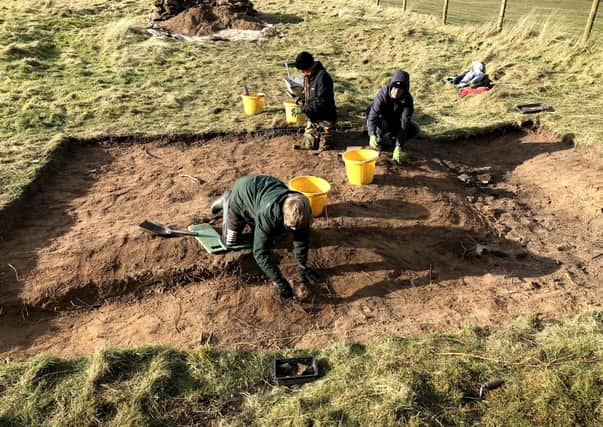

Dr Montgomery was the lead archaeologist for the community excavation undertaken by the CCA earlier this year.
The excavation uncovered a fascinating insight into First World War practice trenches dug by soldiers training at Magilligan before being sent to the Western Front.
Advertisement
Hide AdAdvertisement
Hide AdDesk-based research using aerial photographs and LiDAR data had identified well-preserved fieldworks characteristic of First World War practice trenches on the Ministry of Defence estate.
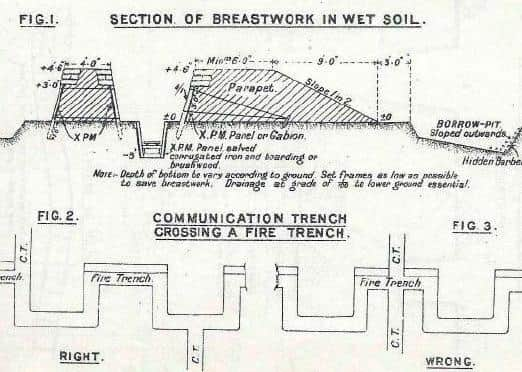

Undertaken in collaboration with MoD/DIO, Landmarc Services and the Causeway Coast and Glens Heritage Trust (CCGHT), the three-week excavation ended on March 20, just before the country went into Covid-19 lockdown, meaning it was the only community excavation project the CCA could undertake this year.
It was very much a community effort, explained Dr Montgomery, with a number of schools getting involved, including Limavady PS, Ballyhagget PS, Limavady Central PS and Termoncanice PS, as well as secondary school, Foyle College.
Members from the Limavady Branch of the Royal British Legion, Prison Service NI and the PSNI also joined the crew for a site tour.
Advertisement
Hide AdAdvertisement
Hide AdSpeaking to the News Letter Dr Montgomery gave a fascinating account of how the excavation came about.
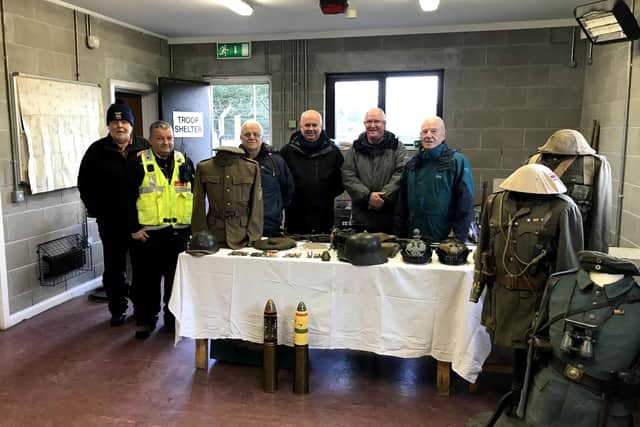

She said: “The Magilligan landscape is rich in archaeological remains ,with approximately 25 entries within the Sites and Monuments Record (SMR) for the Magilligan Estate and townlands of Magilligan Point.
“These include,defence heritage records and industrial heritage records, in addition to a scheduled Second World War Heavy Anti-Aircraft gun Battery and a Grade ‘A’ historic building.
“There are also a number of recorded shipwrecks documented within the Magilligan seascape and immediate area.”
Advertisement
Hide AdAdvertisement
Hide AdExplaining how she came to be a military archaeologist and working with CCA at Queen’s University, Dr Montgomery said: “I have been very lucky to be involved with CCA at Queen’s University for quite a few years now, thanks to the unit directors, Dr Colm Donnelly and Professor Eileen Murphy.
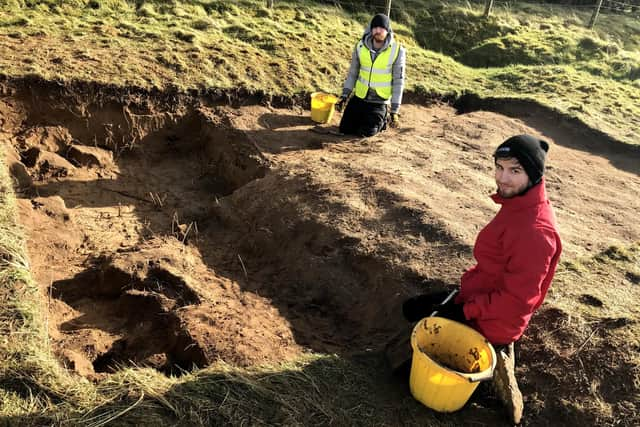

“Dr Donnelly was initially my undergraduate thesis moderator, then later my PhD supervisor, enabling me to work closely with the archaeological unit at Queen’s since 2006 as both a research student and a member of the excavation team.”
The Centre for Community Archaeology, previously the Centre for Archaeological Fieldwork (CAF), has helped communities across Northern Ireland explore their local heritage for more than 18 years.
The CCA facilitates community involvement in archaeological fieldwork and heritage-led programmes, and currently has an annual average of 1,500 schoolchildren and 400 adult volunteers taking part in its projects.
Advertisement
Hide AdAdvertisement
Hide AdDr Mongtomery added: “I am fortunate to have been given the opportunity to continue my research in First World War and military archaeology, and really enjoy getting involved in the community archaeology aspect of our work, which is what we are primarily about. It’s not just digging holes in the ground; there is much more to it than that.
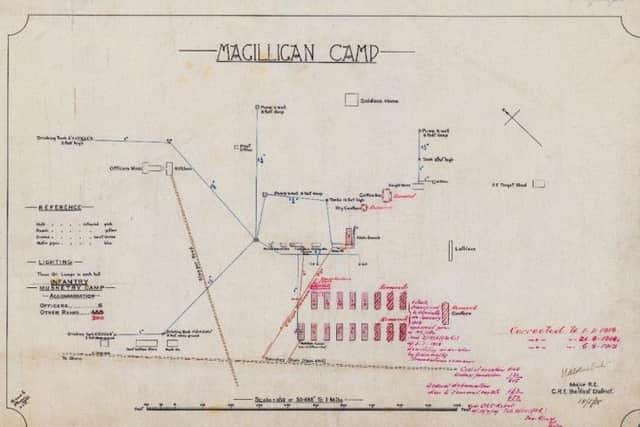

“We engage with all types of communities, connecting young and old alike with their local heritage environments.
“We facilitate community through excavations and fieldwork, talks, guided tours, upskilling workshops, experimental archaeology, and most recently, though our online Community Archaeology Toolkit”.
“Our work with community is both varied and rewarding.
“We are also associated with the Ulster Archaeological Society and through that we are an umbrella group for the Ulster Archaeological Survey Group and the Young Archaeologists Club (YAC) at Queen’s. It’s all about bringing archaeology into the community.”
Advertisement
Hide AdAdvertisement
Hide AdExplaining how the recent dig at Magilligan came about Dr Montgomery said: “My PhD was a study of Kitchener’s New Army and the First World War training landscapes in Ireland from an archaeological perspective.
“Within historical narratives which have prevailed since the Great War, there is some suggestion that the Irish soldiers were not particularly well trained prior to their arrival on the battlefield, often portrayed to be an ill-disciplined drunken rabble, that hadn’t so much as dug a trench before heading to the front!
“This notion of the Irish soldiers was based largely on reports from senior officers within the British Army who, at the time, were institutionally biased against the New Army Divisions from Ireland and often culturally inclined to look negatively at such troops in general.
“My research demonstrated that there was in fact extensive and relevant training undertaken across Ireland 1914-18, by Irish soldiers in the New Army, to begin to prepare them for life in the trenches.
Advertisement
Hide AdAdvertisement
Hide Ad“I had been to France and excavated trenches there; I knew how these men had worked, lived, slept and often died in these trenches. I wanted to find out how the men got there.
“They didn’t just get taken from Ireland to the Western Front; they had to have had some training on home soil prior to this.”
The opportunity to explore MoD sites came about quite unexpectedly.
“Within the first six months of my research I was contacted by Major Canniford at Ballykinler MoD/DIO, who, at the time was developing the historic narrative for the Ballykinler military training estate,” said Dr Mongtomery. “The MoD are custodians of these relict landscapes and, as such are eager to understand how to ensure their lasting protection, while making them accessible for our future generations.
Advertisement
Hide AdAdvertisement
Hide Ad“Major Canniford at Ballykinler training estate has been terrific to have worked with over the last number of years.”
The work carried out at Magilligan in March 2020 is a precursor for a future excavation planned for 2021 (COVID-19 allowing).
Dr Montgomery said: “What we have been doing up at Magilligan has been a follow-on to Community Excavation work the CCA have previously undertaken at Ballykinler, in partnership with the MoD/DIO.
“A key purpose of the project was to connect local people with the First World War heritage landscape in their area by generating increased levels of knowledge and awareness about the defence heritage resource within the MoD/DlO Magilligan Training Estate.
Advertisement
Hide AdAdvertisement
Hide Ad“This was enabled through a programme of community-based archaeological fieldwork, working in collaboration with MoD/DIO, Landmarc Services and Andrew Bratton of the Causeway Coast and Glen’s Heritage Trust (CCGHT) a former QUB doctoral graduate himself.
“All being well, the second phase of the excavation planned for next year will still go ahead, again working with Andrew, supported by the CCGHT, Heritage Lottery Funded project and MoD/DIO.” So what did they find this March at Magilligan?
“Two trenches were opened,” said Dr Montgomery. “Trench 2 investigated the remains of a section of a crenellated First World War fire trench.
“The excavation revealed some of the original breastwork sandbags still in-situ, acting as both force protection and structural support within the practice trench, as would have been the case when constructed on the battlefield.
Advertisement
Hide AdAdvertisement
Hide Ad“The relict trench appears to have been constructed in a manner similar to ‘breastwork’ trenches seen in Flanders and other areas of saturated ground.
“War Office publications, provide illustration of this type of trench fortification.
“The inner and upper surface of the fire trench is revetted by numerous courses of sandbags, effectively building-up a protective parapet and parados without having to dig down into waterlogged soil as in the case of Belgium, or into soft sand in the case of Magilligan.
“Trench 3 established that the structures most likely represent configurations of the early ‘S’-type fire trench, 1914, similar to those previously identified at Ballykinler Training Camp in Co Down, used prior to the adoption of the static crenellated frontline.
Advertisement
Hide AdAdvertisement
Hide Ad“Substantial sandbag revetment and ‘breastworks’ similar to those found in Trench 2 were also identified in Trench 3.
“I am just finalising my report into the dig at Magilligan in March.
“The site is peppered with military archaeology, in some cases, dating back to the Boer War era.
“We went to Magilligan believing that the landscape would be very similar to that at Ballykinler, demonstrating a range of military trench construction technique; however, we are delighted to have identified the use of the breastwork style parapets, which have not previously been recorded in Ireland.”
Advertisement
Hide AdAdvertisement
Hide AdHow has the Covid-19 crisis impacted on Dr Montgomery’s work as an archaeologist and the work of CCA?
“The Covid-19 crisis has meant that our work has had to go indoors,” she said. “We have focused on what we would often work on during the winter months, or at times when excavations are not happening. We have been doing a lot more desk-based research, writing up reports, completing specialist analysis reports; also developing our online presence and releasing our Community Archaeology Toolkit.”
Community engagement is an important aspect of the CCA’s work.
“We are now being led by the community, especially those that we had planned to work with this year,” said Dr Montgomery. “Because of the crisis much of their work has had to be put on hold.
Advertisement
Hide AdAdvertisement
Hide Ad“However, the projects are still there, and we will be there for our partners and community groups when they start back up again. In the medium term it is a mitigation process, that if we are outside doing survey work or giving a lecture in the coming months, we ensure that all COVID regulations are adhered to.
“It has cut down, obviously, on what you can and cannot do; digging during the summer has not been an option unfortunately. Excavations are something that we look forward to every year, so it’s a pity that this hasn’t been possible in 2020, a loss that has been felt right across the archaeological community.”
Comment Guidelines
National World encourages reader discussion on our stories. User feedback, insights and back-and-forth exchanges add a rich layer of context to reporting. Please review our Community Guidelines before commenting.